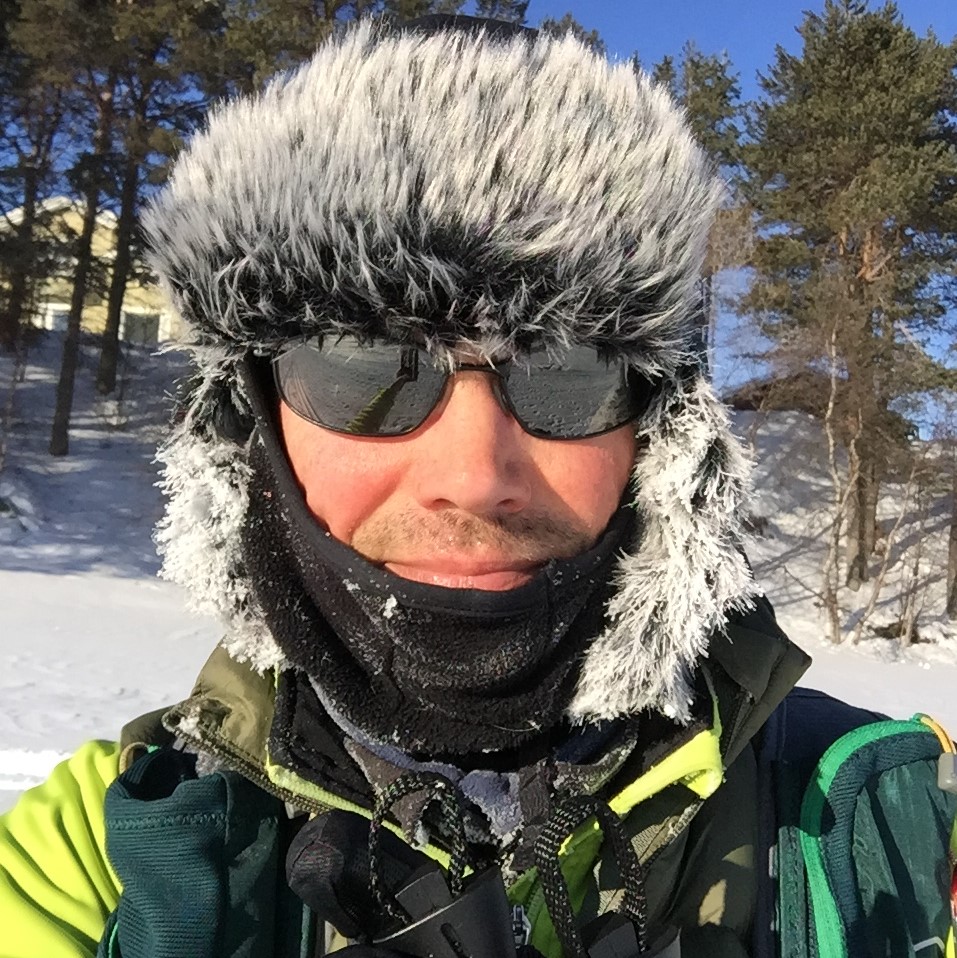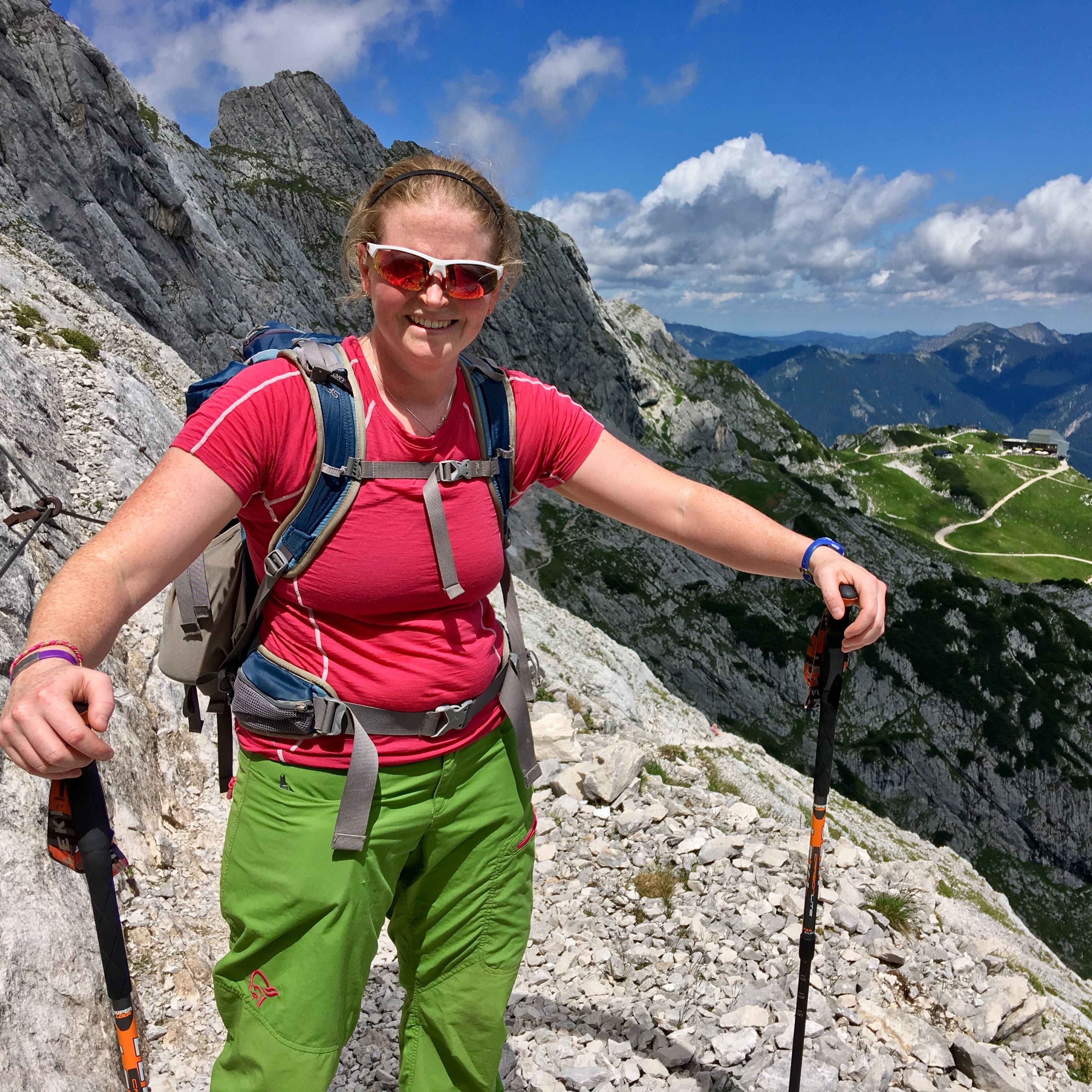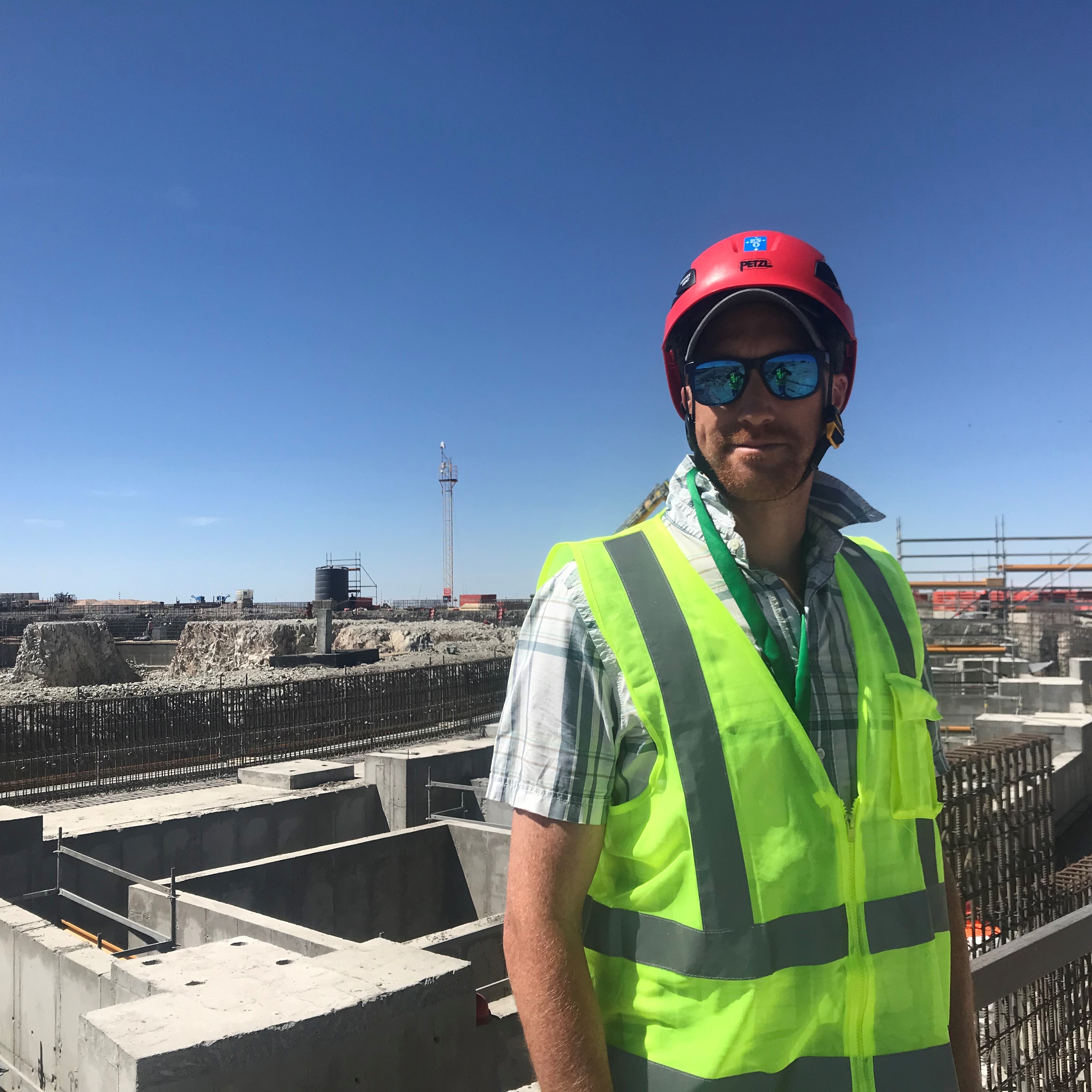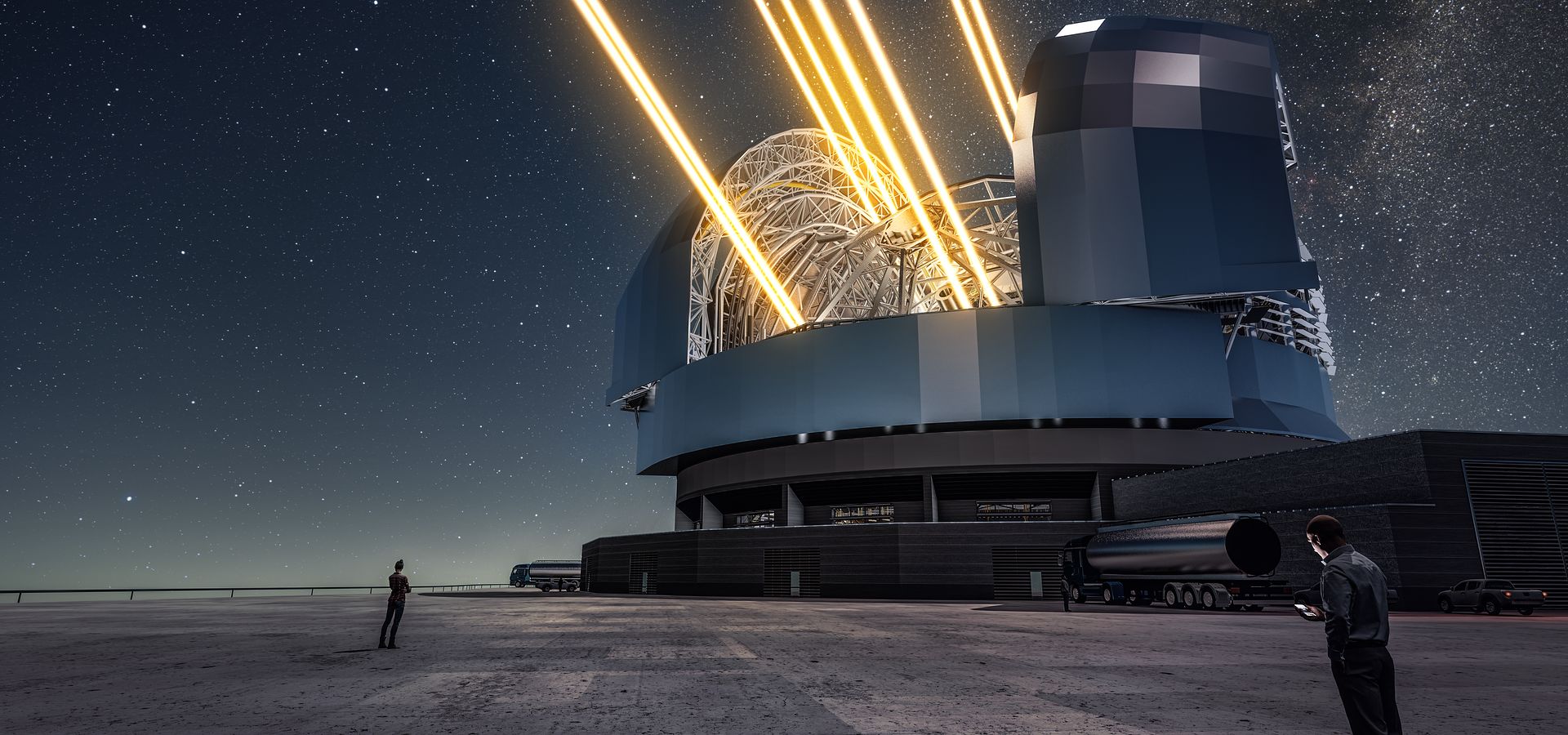- How thinking big and aiming high is creating the “world’s biggest eye on the sky”
- What the day-to-day work looks like for some of those working on the ELT
- Some of the rewarding aspects of working in science and on the ELT
- How ESO scientists, engineers and technicians found their careers in astronomy
Bigger than all existing optical research telescopes combined, ESO’s Extremely Large Telescope (ELT) will drive astronomy into the future, tackling the biggest scientific challenges of our time. But to construct such an innovative and powerful telescope, it takes many different people working in an enormous variety of roles. In this series of blog posts, we hear from some of the people working on the ELT, exploring the work they do to help us reach the stars.
Suzanne Ramsay (Instrumentation Manager)
Claudio Cabrera (Civil Engineering Project Manager)
Jason Spyromilio (Telescope Scientist)
Miska Le Louarn (Adaptive Optics Physicist)
Elizabeth George (Detector Engineer)
Dominik Schneller (Systems Engineer)
Ulrich Lampater (Control Engineer)
Dimitris Kalaitzoglou (Retired Power Engineer)
Suzanne Ramsay (Instrumentation Manager)
 Suzanne Ramsay at the SPIE instrumentation conference in 2018, next to a 1:1 scale print out of the ELT’s METIS instrument without its support structure.
Credit: ESO/Suzanne Ramsay
Suzanne Ramsay at the SPIE instrumentation conference in 2018, next to a 1:1 scale print out of the ELT’s METIS instrument without its support structure.
Credit: ESO/Suzanne Ramsay

"I am responsible for delivering the first instruments to the ELT. All of these are built outside ESO by large consortia of universities and institutes mostly in the ESO Member States. So maybe you can guess that much of my working day is spent in meetings of varying sizes, from internal discussions with a few ESO colleagues to consortium progress meetings with 100 people.
My work in astronomical instrumentation started with my PhD at the University of Edinburgh in the UK. A chance remark by one of my undergraduate professors made me think about doing something that combined practical work with astronomical research and I have always been grateful for this comment; there is something satisfyingly tangible about an instrument project — a different satisfaction from producing a research paper. Every astronomical instrument is a one-off; the ELT’s instruments are incredibly challenging thanks to the colossal size of the telescope.
I have worked on many instruments and every one’s “first light” — the first time you get a star on the detector — is burned into my memory. This moment is the culmination of years of work by the instrument team and is a real cause for celebration. The on-sky commissioning periods that follow are very intense — not always easy but there is a great focus by the team on what needs to be done. In the ideal cases, everyone is working and working together at their best. Many colleagues will probably laugh at this — it’s also a good time for stress and lack of sleep to cause arguments!
Aside from the instruments, I am fascinated by the breadth of topics that have to be considered for this telescope — from the geological details of the new mountain top to the incredible precision with which the 798 mirror segments have to be controlled to deliver the quality of images that astronomers expect. The most memorable moment on the ELT project for me was the first (and so far only) trip to the new telescope site on Cerro Armazones. Simply breathtaking."
Claudio Cabrera (Civil Engineering Project Manager)
 Claudio Cabrera building a small plane, one of his hobbies.
Credit: ESO/Claudio Cabrera
Claudio Cabrera building a small plane, one of his hobbies.
Credit: ESO/Claudio Cabrera

“I grew up in a small city named Ovalle, which is close to a city where the first observatories were built in Chile back in the ‘60s. I have always felt some fascination for those places sitting at the summit of a big mountain. So, when I saw ESO was looking for a Civil Engineer back in 2008, I didn’t think twice and I was lucky enough to be selected to lead the ESO ALMA site team. One of the nice moments I’ll always remember at ALMA was the telescope’s inauguration and the good times we had during the construction period when I was head of the site development group.
My role within the ELT is Civil and Infrastructure Project Manager and is all related to roads, earth works, some logistics aspects, buildings, and more. In construction, there is no fixed schedule; sometimes you start the day with something in mind and, after some hours, you end up doing something completely different — that variety of each day is what I enjoy most about my job.
One particularly interesting moment was the first blasting made at the Armazones top platform in June 2014. It was the start of the removal of three-quarters of a million tonnes of rock. When I’m not working, I like to be at home with my wife and three adult daughters; I live close to a mountain and go on walks there with my family and friends. And recently, I restarted a hobby I had when I was a kid: building little aeroplanes that fly using electric or combustion engines.”
Jason Spyromilio (Telescope Scientist)
 Jason Sypromilio presenting.
Credit: ESO/Jason Spyromilio
Jason Sypromilio presenting.
Credit: ESO/Jason Spyromilio

“As the Telescope Scientist my job is to commission the ELT and deliver a working telescope to its users. To prepare for this, I work with some very talented people in ESO to develop the baseline operation and calibration strategy for the telescope while keeping an eye on the evolution of the hardware and software systems as they are being implemented. A typical day involves reading and writing documentation, coding simulations, and having many discussions with colleagues about solutions to real and imaginary problems. I have had the privilege of being involved with the ELT project in various roles from its inception and I enjoy learning about, and understanding, the physics of telescopes.
I was fortunate, soon after I joined ESO in 1994, to be given the opportunity to head up the New Technology Telescope upgrade project and after that to lead the commissioning effort at the Very Large Telescope (VLT). One of the challenges of enormous telescopes is that you don’t get to test them in the lab before going to the mountain so I guess much will be revealed when we go to Armazones and I look forward to finding out what I got right and what not. Certainly the scientific highlight of my career has been my participation in the discovery of the accelerating expansion of the Universe together with Bruno Leibundgut here at ESO and many colleagues around the world. On the technical side, I have great recollections of the first stars of each of the telescopes and later seeing the happiness of instrument teams after they successfully attach to the telescope.
When I’m not working, I run and ride my bike and, when I can, I go to where the waters are warm, the winds favourable and, depending on the company one keeps, the dolphins plentiful. I was born in Athens and love the Aegean, but unfortunately Munich is far from it and Chile even farther.”
Miska Le Louarn (Adaptive Optics Physicist)
 Miska Le Louarn.
Credit: ESO/Miska Le Louarn
Miska Le Louarn.
Credit: ESO/Miska Le Louarn

“I have been doing astronomy since I was a kid. During an internship at NASA, I used one of the first adaptive optics systems with a laser guide star system to observe a comet crash on Jupiter. This event steered me towards adaptive optics — using mirrors to correct for how turbulence in Earth’s atmosphere distorts light from the Universe. Years later, seeing the four laser guide stars of the Adaptive Optics Facility working together on the VLT was the conclusion of many years of studies and simulations that I had started doing during my PhD thesis. This was the proof that almost 20 years of work was not done in vain. Now my work consists of doing adaptive optics simulations for the ELT and its instrumentation. I simulate how light propagates through Earth’s turbulent atmosphere, the telescope and its deformable mirror and finally reaches the scientific instruments. This allows me to model how images taken by the ELT will look, depending on the characteristics of the adaptive optics system that we use.
One of my favourite things about working on the ELT is being in an international environment, with people from many nationalities coming together to work on common projects. I also like the mixture of high-tech and scientific research that I am able to work on. Since a telescope this large has never been built before, we have to explore many different aspects and that is what makes it so interesting. When I’m not sitting in front of a computer working on simulations, I love to cycle and run. I’ve even done a few ultra-marathons!”
Elizabeth George (Detector Engineer)
 Elizabeth George leading an ESO social day trip to Alspitz.
Credit: ESO/Elizabeth George
Elizabeth George leading an ESO social day trip to Alspitz.
Credit: ESO/Elizabeth George

“I’ve always been one of those people who asks “why” when presented with a new piece of information. This made me an especially annoying child, but an excellent scientist. I started studying physics because I wanted to understand how the Universe works. But it turns out we don’t understand everything yet, so I got into engineering instruments for astronomy because I wanted to build the equipment we need to find out more about the Universe. My main role in the ELT is that I am the lead engineer and project manager for scientific detector systems for HARMONI, the first-light spectrograph for the ELT. No two days are the same for me! One day, I may spend a lot of time interacting with scientists and engineers from all over Europe to make sure that when we go to put the detectors into HARMONI they work the way they should. On another day you might find me in the lab integrating a detector into a cryostat to keep it at a very low temperature. A few days later, you would find me at a computer operating the detector system and analysing the data we get back.
The most memorable moments in my career so far have always been “first light” moments: The first time a detector is working in the lab, the first time a detector is working inside of its instrument, and, the best, first light on the telescope when you see the first bit of light from a star or galaxy. I am willing to try my hand at almost anything, both at work and outside of it. I’ve participated in so many different sports from the more obscure like pole vaulting, kayak polo and caving, to the mainstream like biking and running. I have also tried to fix nearly everything around the house from sewing clothes to welding pipes. I figure you can learn something new from every experience in life, so why not try lots of new things?”
Dominik Schneller (Systems Engineer)
 Dominik Schneller at Cerro Armazones in front of the ELT construction grounds.
Credit: ESO/Dominik Schneller
Dominik Schneller at Cerro Armazones in front of the ELT construction grounds.
Credit: ESO/Dominik Schneller

“Early on, I had a strong curiosity for understanding how things work. This started with playing with LEGO and developed into disassembling old household equipment, such as phones and radios. My curiosity ultimately led to an interest in the field of computer technology including my first experience in coding. Today, I am a member of the ELT Systems Engineering group and some of the things I am responsible for include writing technical requirement specifications for the procurement of ELT subsystems and overseeing changes to, and interfaces between, the contracts we have with external partners to develop parts of the ELT. The daily work is technically challenging but extremely interesting, and it is a real pleasure because we have a lot of great colleagues on our team.
The ELT is a machine at the edge of technology, providing lots of interesting work and insights to the latest high tech in many fields. It is a once-in-a-lifetime opportunity for people who are interested in astronomy and will contribute significantly to the advancement of humankind. Outside of work, I have several outdoor hobbies like sailing, swimming, paragliding, motorbiking. More recently, my passion for flight simulators has been reactivated. I also like to travel, but in rather unusual ways. I have already done various long distance motorcycle trips including to Istanbul and St. Petersburg, but my most interesting trips were to North Korea and Iran. The visit to Paranal Observatory and the Very Large Telescope was also a mind-blowing experience; its uniqueness and beauty is just breathtaking!”
Ulrich Lampater (Control Engineer)
 Ulrich Lampater characterising a cryocooler that cools parts of a telescope and its instruments to extremely low temperatures.
Credit: ESO/Babak Sedghi
Ulrich Lampater characterising a cryocooler that cools parts of a telescope and its instruments to extremely low temperatures.
Credit: ESO/Babak Sedghi

“I have always been fascinated by aeroplanes and space exploration, so I studied aerospace engineering and got especially hooked on control engineering. To me, it is a bit like magic powder that makes all the individual parts of a system work together. You push a button and it moves! At the end of my studies, I got the offer to work on a telescope called SOFIA that is installed on an aeroplane. This is how I got into astronomy, and now I find telescopes even cooler than aeroplanes. As a Control Engineer for the ELT, I help make sure that active devices of the telescope are designed and implemented such that they fulfil their — usually quite challenging — performance requirements. Control engineering requires close interaction with various disciplines, so our work depends on input from many experts. Fortunately ESO has highly skilled and very motivated staff, making it easy to find experts for in-depth discussions, who will challenge my conclusions.
To me, a good day at work is one where I learn something new or get a new perspective. One of the most memorable moments of my career was being part of the team that acquired the first guide star on the SOFIA telescope while being airborne, and then the first airborne light on a science detector only a few nights later. This is the moment when all the hard work of so many people paid off. For the ELT this moment is of course still far away. But in the end it is probably not about the moment itself, but the common journey of all those involved that leads up to it. I am happy to contribute my small part to this journey.
Dimitris Kalaitzoglou (Retired Power Engineer)
 Dimitris Kalaitzoglou in front of a transformer.
Credit: ESO/Dimitris Kalaitzoglou
Dimitris Kalaitzoglou in front of a transformer.
Credit: ESO/Dimitris Kalaitzoglou

“Before retiring, my role was to help the ELT Programme Manager realise the Chilean President’s commitments to provide electricity to the ELT from the Chilean grid, and cooperating with both partners was what I enjoyed most about my work for the ELT. One of the most memorable moments of my career was the December 2013 visit of SAESA (a Chilean electricity company) Directors to Paranal Observatory, when it was initially confirmed that SAESA would work in cooperation with ESO for an ELT grid connection. The inauguration of Cerro Armazones in July 2017 was also an amazing moment and reminded me of my past experiences in Greece visiting high voltage substations. Now that I am retiring, I am happy to return permanently to the sun in Greece.”
Numbers in this article
| 798 | Number of segments that will make up the ELT’s primary mirror. |
| 1994 | Year that Jason Spyromilio joined ESO and started leading the New Technology Telescope. |
| 2008 | Year that Claudio Cabrera joined ESO as a Civil Engineer. |
| 2013 | Year that the directors of Chilean electricity company SAESA visited Paranal Observatory. |
| 2014 | Year of the first blasting made at the Cerro Armazones top platform, in preparation for building the ELT there. |

